Overview
At Source, we bring the broad experience of all our team members to each new project. We take on projects at every stage of mine life from pre-engagement through closure, whether greenfield or brownfield.
We have a demonstrated history of helping clients navigate through complex water management issues and permitting processes. We use clear communication strategies to build collaborative relationships with Indigenous communities and regulators based on a foundation of science and engineering excellence.
Our experience and expertise span a wide range of projects, which include, but are not limited to, mining projects, environmental remediation work and watershed stewardship policy development, across British Columbia, Alberta, Saskatchewan, and the Yukon.
To the left is a list of selected projects our team has been involved with over the last decade.
Blackwater Gold Mine
The Blackwater Gold Mine is an open pit gold and silver mine located in central British Columbia, southwest of Vanderhoof. While the mine site itself does not overlap the Traditional Territories of the Nadleh Whut’en, Stellat’en, and Saik’uz First Nations (collectively the Nechako First Nations), the Project’s transmission line directly crosses the Nations’ Territories.
As the Nechako Nations are located downstream of the mine site footprint, there is high potential for downstream impact to the communities as a result of mining activity. Source contributes our expertise in surface and groundwater management, water treatment, bonding, and closure planning to ensure the appropriate environmental plans and permit conditions are in place to prevent and mitigate potential impacts to the Nations.
During permitting, Source provided input to guide the development of a fulsome Care and Maintenance Plan. The outcomes of this work have been incorporated into the design of the Blackwater Gold project and included as permit conditions in their Mines Act permit. This sets an important precedent for care and maintenance planning for mines in the Province, and is indicative of meaningful collaboration between mining proponents, the Province, and Nations.
Source has been providing technical support to the Nechako First Nations on this project since 2014, from the Environmental Assessment through to permitting. Today, Source continues to work on the Blackwater Project, supporting life of mine commitments and permit requirements, during the mine’s construction phase.
Gibraltar Mine
The Gibraltar Mine is an open pit copper mine located in central British Columbia, north of Williams Lake. The mine is situated on the Traditional Territories of Xatsull and ?Esdilagh First Nations and is the fourth-largest open-pit mine in North America.
The mine has been unable to discharge effluent from their tailings storage facility in recent years due to high levels of nitrate, causing large volumes of untreated water to accumulate on site. Source currently provides support to ?Esdilagh First Nation during the permitting of a water treatment plant and biological treatment trial that aim to reduce nitrate levels in effluent and resume discharge of water off site.
Source has been providing technical support on the Gibraltar project on behalf of ?Esdilagh First Nation since 2014. Source’s expertise on the project includes mine water management, treatment, discharge planning and closure planning.
Lejac
Source’s remediation work was covered in the Prince George Citizen here.
In early 2020, Source Environmental Associates (Source) was retained by Nadleh Whut’en First Nation (Nadleh) and Crown-Indigenous Relations and Northern Affairs Canada (Canada) to complete an Environmental Site Assessment (ESA) at Seaspunkut Indian Reserve (IR) #4, land owned by Nadleh. IR #4 is located on the shore of Fraser Lake and encompasses a total area of 523 acres. Tse Yaz Bunk’ut is the name used by Nadleh for Seaspunkut IR #4.
Source’s work aimed at remediating the site of the “Lejac Residential School” that occupied these lands from 1922-1976. Our work addressed the remaining contamination from previous remediation efforts at the Site. Source refers to the study area simply as “Lejac”, or the Site, as the name “Lejac Residential School” does not accurately reflect the main activities that transpired at the Site. Source acknowledges the difficult issues and legacy associated with Lejac.
Source’s ESA field work, which consisted of soil, water, and vapour investigations, identified four main areas of contamination at the Site. Consequently, a remediation plan was developed to fully delineate and determine the most efficient method to address these contaminated areas. The BC provincial standards, federal guidelines for contaminated sites, and the Yinka Dene ‘Uza’hne’ Water Law (YDWL) were used to define appropriate remediation targets and protection goals for the Site. A main goal of the project is to remediate waters at the Site to meet use-protection standards, which aligns with the YDWL. While the YDWL has no classification system for groundwater, the implementation of the YDWL surface water quality standards ensures the protection of groundwater at the Site.
Remediation plans were developed with the intention of improving the Site to a level suited for Nadleh’s planned future uses. Source proposed that remediation of the Site be conducted over four 12-week periods. As of December 2022, the two sources of contamination with the greatest risk to the Site have been remediated.
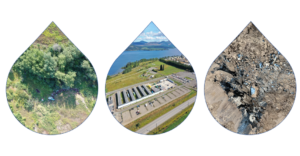
Faro Mine Remediation Project
Faro is an abandoned mine in Yukon just upstream from the territory of Selkirk First Nation.
Faro is one of Canada’s largest mining related environmental liabilities and is managed by the federal government under CIRNAC. The site suffers from large scale onset of acid mine drainage that requires treatment and management in perpetuity.
Chinook salmon and other fisheries of the Pelly River are downstream of the Faro mine and are critical to Selkirk First Nation’s rights and interests.
Source has supported Selkirk First Nation since 2018 as one of Selkirk’s representatives on the Technical Review Committee and through review of the project remediation proposal, which at the time of writing is before the Yukon Environmental and Socioeconomic Assessment Board (YESAB).
Source contributes expertise on mine water treatment, discharge planning, water management, groundwater contamination, and mitigation design as part of a multidisciplinary team.
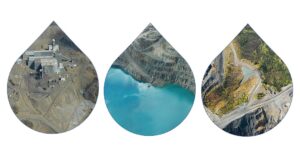
Premier Gold Project
Source has provided technical support to the Nisga’a Lisims Government (NLG) on Ascot Resources’ Premier Gold Project since 2018.
This project is located on Nisga’a lands in northwestern BC nearby the town of Stewart.
Source’s technical scope on the project has included collaboration between NLG and Ascot on tailings and water treatment best available technology studies, planning for remediation of environmental issues associated with past mining activity, development of mine water management strategy, and setting an appropriate reclamation and closure security.
Source has supported NLG’s engagement with BC’s Environmental Assessment Office, Ministry of Environment, and Ministry of Energy, Mines and Low Carbon Innovation to ensure that appropriate regulatory conditions are included in final project permits.
Since construction on the project began in 2022, Source has provided ongoing technical support to NLG relating to mine water management and regulatory issues.
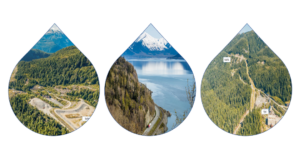
Wheeler
The Wheeler River project is a greenfield uranium project in Saskatchewan on the territory of English River First Nation.
Wheeler River project would involve injection of acidic solution into the mineral formation followed by recovery and processing of uranium bearing solution on surface. Should it be developed, the Wheeler River project would be Canada’s first in-situ uranium leach project.
Source has provided technical support to English River First Nation related to advanced exploration and testing of the in-situ leach process as well as the full scale project. Our focus has been on environmental risks and modeling of groundwater contamination, management of leach solution on surface, process water treatment, and remediation and closure planning.

Endako Mine, Review
Review of the Mine Closure and Mine Expansion plans, primarily focused on water quality and geochemistry.
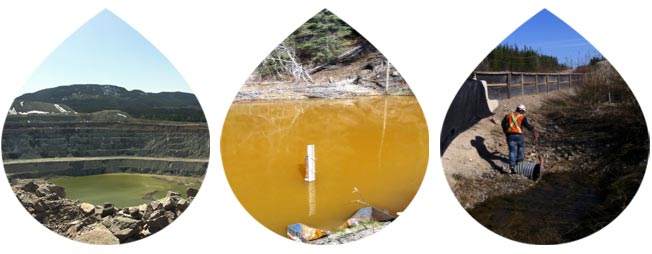
Cantung Mine
Geochemical field investigation including excavation of historic river tails, waste rock and underground mine wall rock.
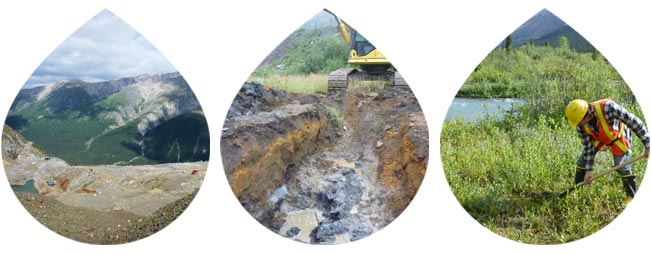
Kemess Underground Mine, EA
Source’s collaborative work (2014–2019) contributed to a successful EA and a fully permitted project. We were instrumental in creating the Selenium Management Plan and effluent discharge permit. Current Source staff also developed and designed the first-of-its-kind selenium water treatment plant.






